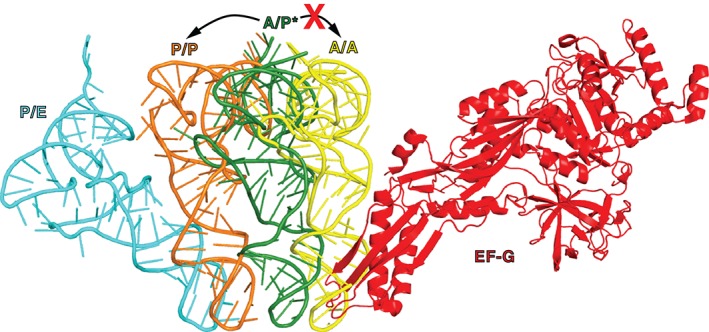Figure 7.

EF‐G may promote tRNA translocation by clashing with A‐site tRNA. A/A (yellow, PDBID 4V5D107), A/P* (dark green, PDBID 4V7D55), P/P (orange, PDBID 4V5D107), and P/E (cyan, PDBID 4V7C55) tRNAs are superimposed by structural alignment of 23S rRNA in the respective structures. EF‐G bound to the viomycin‐trapped pretranslocation ribosome is shown in red (PDBID 4V7D55). In the absence of EF‐G, spontaneous intersubunit rotation is coupled to the fluctuation of tRNAs between classical (A/A and P/P) and hybrid (A/P [A/P*] and P/E) states. In the presence of ribosome‐bound EF‐G, upon the reverse intersubunit rotation from the rotated to nonrotated conformations of the ribosome, the movement of peptidyl‐tRNA from A/P* to A/A state is disallowed because of the clash with domain IV of EF‐G and, thus, the peptidyl‐tRNA translocates into the P/P state.
